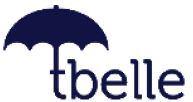
A brilliant strategy without a capable workforce is like a blueprint for a skyscraper with no builders—ambitious in theory, but destined to stall.
In today’s fast-paced and ever-evolving business landscape, a well-crafted plan is only the starting point. The true test lies in execution—and that hinges entirely on your people.
Many companies invest months refining strategy decks and five-year roadmaps. But when it’s time to roll them out, something breaks down.
Harvard Business Review points to a sobering truth: up to 90% of strategic plans fail, not because the strategies are weak, but because execution falls short. Strategy, it turns out, is not a standalone hero. It needs a cast—your workforce—fully equipped and aligned to bring it to life.
That alignment is what we call calibration. It’s not a buzzword or a HR-side project. It’s a company-wide discipline that ensures employees are not only ready for today’s responsibilities but prepared for tomorrow’s challenges.
Calibration is the ongoing act of making sure your people—at all levels—are moving in the same direction as your business. And in a world where the skills needed today won’t be enough tomorrow, it may be your most important strategic asset.
It Starts on Day One: Calibrating Through Onboarding
A company’s trajectory with a new hire is often set in the first few weeks. Yet many onboarding programs are little more than a checklist: orientation slides, systems training, and policy briefings. Functional? Yes. Transformational? Not quite.
True onboarding should do more than introduce tools and processes. It should embed new employees into the company’s strategic vision—the why behind the what. According to Glassdoor, companies with strong onboarding practices improve new hire retention by 82% and increase productivity by more than 70%. These aren’t small gains—they’re foundational to performance.
But those results don’t come from paperwork. They come from context—the ability for an employee to see how their role contributes to something bigger. That’s where calibration begins.
Tbelle’s Workforce Integration Guide introduces the concept of immersive onboarding, where new hires are aligned not just with their job descriptions, but with the evolving direction of the company. This includes:
- Mapping their roles to the broader strategic objectives
- Outlining how their skills will need to grow over time
- Establishing early feedback loops to course-correct if needed
In this kind of onboarding, an employee doesn’t just learn what they need to do—they learn why it matters. They’re given clarity, purpose, and momentum from the beginning.
Think about it: when a new hire feels like they’re already contributing to long-term goals, engagement soars. That’s the difference between simply being employed and being strategically activated.
Training Is Good. Calibration Is Better.
Every organization offers training. But not all training is created equal. The difference between good training and strategic calibration lies in intentionality.
LinkedIn Learning’s 2023 report found that while 89% of Learning & Development leaders agree that building new skills is critical to organizational success, only 49% say their training programs are directly aligned with strategic goals. That’s a staggering gap—one that represents millions in wasted development dollars and untapped workforce potential.
Calibration solves for that disconnect.
Rather than rolling out generic workshops, calibrated training begins with one key question: What does the business need to succeed a year from now? From that answer, you reverse-engineer the capabilities your teams will need. This might mean:
- Training managers to lead through uncertainty
- Upskilling teams to handle new technologies
- Preparing staff for upcoming market expansions or product pivots
And training isn’t a one-time event. It’s a continuous cycle of growth that evolves alongside your business. That’s why re-training plays such a vital role in a calibrated workforce strategy.
The World Economic Forum estimates that 60% of employees will require significant re-skilling by 2027. This isn’t about remediation—it’s about future readiness. It’s about ensuring your workforce can move when the market moves, and pivot when the business pivots.
Tbelle frames this as a strategic renewal loop: a recurring process of reassessment, re-skilling, and re-engagement. It ensures your workforce stays in sync with shifting demands, whether driven by technology, competition, or internal transformation.
The best companies don’t just train for today. They build for what’s next.

The Power of Data: Turning Alignment Into a Measurable Advantage
Strategy-aligned training is only as good as the insights behind it. That’s where data becomes your calibration engine.
Too often, organizations rely on gut feel to make workforce decisions. But assumptions don’t scale—analytics do. Data-driven companies can spot misalignment before it shows up in performance, identify emerging skills gaps, and monitor the ROI of training investments.
Deloitte’s 2024 Human Capital Trends report reinforces this, showing that companies using advanced workforce analytics are 3.5 times more likely to outperform their peers in revenue growth, customer satisfaction, and innovation.
So what kind of data matters?
- Skills inventories: Do you know what capabilities your people have now—and what’s missing?
- Development tracking: Are employees progressing in the areas most tied to strategy?
- Readiness indicators: Can you fill key roles quickly if your business model changes?
- Performance data: Are trained employees actually applying what they’ve learned?
Modern platforms—from learning experience systems to AI-powered performance tools—can now offer real-time insights. But data alone isn’t the solution. The power comes from acting on it.
Calibration becomes a living, breathing process when analytics inform every talent decision, from hiring and onboarding to training and succession planning. It shifts HR from being reactive to being a strategic partner in business execution.

Strategy Is Everyone’s Job—But Leaders Make It Happen
No calibration program will succeed without leadership buy-in. In fact, leadership is the force multiplier behind successful workforce alignment.
Why? Because when leaders understand the company’s direction and actively coach their teams toward it, strategy stops being a poster on the wall and becomes part of everyday work.
The Tbelle Workforce Integration Model emphasizes purposeful leadership as the anchor of effective calibration. Great leaders do more than manage—they communicate the “why,” connect individual roles to business outcomes, and role-model continuous learning.
Consider the example of Microsoft’s transformation under Satya Nadella. As the tech giant pivoted from a product-first to a cloud-first business model, the shift wasn’t just technical—it was cultural. Microsoft invested in reskilling thousands of engineers, embedded a growth mindset company-wide, and redesigned team structures to support new strategic goals.
Nadella didn’t leave calibration to chance. He made it a leadership priority. The outcome? A threefold increase in market cap, a surge in innovation, and a workforce that could execute in lockstep with the business.
That’s the kind of alignment that creates lasting competitive advantage. And it doesn’t come from a single training session. It comes from leaders who make strategy real, every day.

Final Thought: Calibrate or Fall Behind
Strategic plans are only as strong as the people carrying them out. And those people must be continually prepared—not just for the present, but for what lies ahead.
Calibration isn’t a one-off project or a quarterly review. It’s a discipline. A continuous effort to build capability in direct response to strategy. It begins with immersive onboarding. It scales through strategic, data-informed training. It adapts through re-skilling. And it succeeds only when leaders take ownership of alignment.
In a world where disruption is the default, the best question a company can ask is not just what’s our strategy? — but rather:
Are our people ready for it?
Written by:
Jane Claire Jamili










